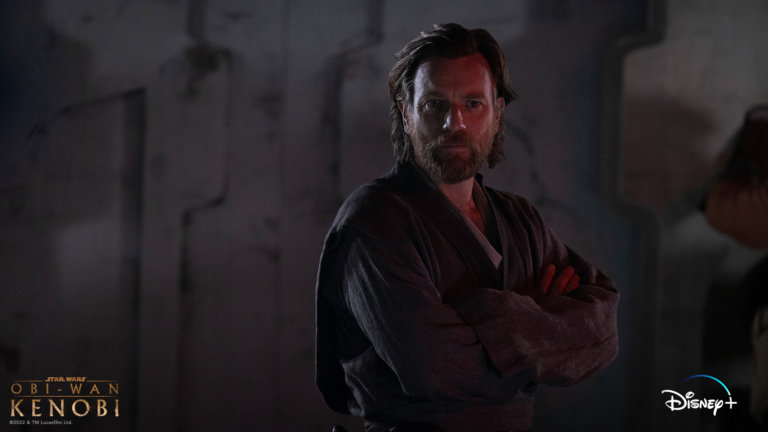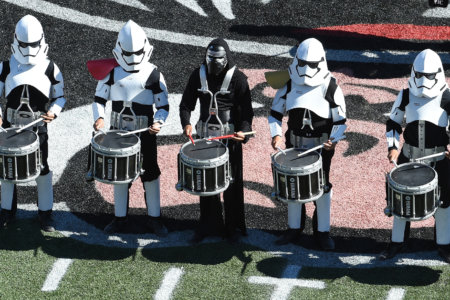
With the finale of “Obi-Wan Kenobi” recently airing, fans everywhere are abuzz about the impact and contributions it has made to the Star Wars saga. All eyes are on its broad range of characters, from little Princess Leia and Darth Vader to Obi-Wan himself — and, considering the level of depth each brings to the series, it’s no surprise that fans are keen to explore them further.
While “Obi-Wan Kenobi” is very much set in the fictional Star Wars universe, there are many real-world lessons students can take away from it. One is in how it explores different qualities and how these affect each character’s effectiveness as a leader. Each character brings something new to the table, showing different ways to navigate uncertainty and conflict.
Importantly, the series shows how each character’s choices as leaders have different outcomes, whether desirable or not. This may be particularly useful to explore for students who are looking to apply for programmes that require some form of leadership, such as an MBA, or even in writing out a personal statement for a university application.
Here are some lessons on leadership that students can learn from three influential characters in “Obi-Wan Kenobi”.
Please note that this article contains spoilers for the “Obi-Wan Kenobi” series!
Obi-Wan Kenobi: Always lend a helping hand when you can

Obi-Wan’s selflessness and tendency to put others first is what inspires loyalty and respect from others. Source: Frazer Harrison/AFP
Despite being the titular character, Obi-Wan Kenobi is far from the leader he once was when he first graced our screens. His character teaches us a lot about patience and mindfulness — as is characteristic of the Jedi — but, in the series, he’s mostly content to sit back and follow the leadership of those around him, putting the needs of others over him.
However, Obi-Wan shows that he is still capable of stepping up as a leader when needed. This is apparent in Episode Five and Six of the series, which sees Darth Vader and his imperial fleet give chase to the rebels. To buy them time, Obi-Wan takes the initiative to put himself in a vulnerable position — confronting both Reva and Darth Vader. This gives the others around him hope and a chance to escape from the imperial army, and most significantly, breeds a deep sense of loyalty and respect for Obi-Wan as a leader and friend.
While we don’t typically encounter scenarios like this in the real world, Obi-Wan’s selflessness and desire to put others first are still very much applicable to everyday life. “A leader who puts others first creates an uplifting, motivating culture that inspires confidence,” writes John Eades, an author, podcaster, and CEO of LearnLoft.
Putting others first doesn’t mean sacrificing yourself in the same way Obi-Wan does; rather, it points to the wider act of offering help to those around you. This could take the form of volunteering your time at an animal shelter over weekends, to tutoring your coursemates if they’re struggling with assignments. The greatest leaders are often remembered and valued for the time and effort they’ve put into lifting up those around them, no matter how small.
Princess Leia Organa: Self-confidence is the key to success

Self-confidence is the key to Princess Leia’s future success. Source: Alberto E. Rodriguez/AFP
One of the highlights of “Obi-Wan Kenobi” was the introduction of a young Princess Leia. Similar to her adult self, this 10-year-old version is sassy, daring, and wise beyond her years. When in moments of crisis, Leia keeps a level head and focuses on finding solutions to the problems presented to her — which is exactly what makes her such a capable leader in the future.
Perhaps the greatest lesson to take away from Leia, however, is her firm and unwavering belief in herself. Throughout the series, she never once doubts her abilities, despite lacking the experiences of her counterparts.
This is a quality that is often crucial for most leaders, especially those with ambition and goals. Peter Stark, president and founder Peter Barron Stark Companies, once wrote: “You can teach a leader to be an effective problem solver; become more decisive; a better communicator; how to coach, mentor and hold team members accountable; and many other fundamentals of leadership. Yet, without that leader first believing in himself or herself, true leadership will exist only in title.”
Darth Vader: Arrogance can lead to your downfall

Darth Vader’s arrogance is what prevents him from being a capable leader. Source: Mark Ralston/AFP
Still, there is a fine line between self-confidence and arrogance. Darth Vader — the former Jedi Anakin Skywalker — reflects the other side of this coin. Throughout the series — and the Star Wars saga as a whole — Skywalker, and later Darth Vader, is portrayed as an extremely powerful user of the Force. However, he also displays high levels of arrogance, which often results in him underestimating his enemies’ capabilities.
This is a dangerous quality for any leader. In the prequel series, Skywalker’s arrogance leads to him losing his arms and legs and through this, the majority of his power. The “Obi-Wan Kenobi” series shows that he hasn’t learnt his lesson — in a final duel with Obi-Wan, he wrongly assumes that his former master is too weak to defeat him, which then leads to his own injury and defeat.
“Arrogance is often confused with confidence, which makes it very difficult to notice arrogant ways of thinking in ourselves,” explains Atara Wertentheil of Long Island Psychology. “But confidence is the proven knowledge that you can accomplish your tasks with the awareness that there might still be setbacks and you will need the help and input of others. [Arrogance] contributes to loneliness, depression, and a lack of direction and success.”










